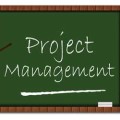
Putting out fires is rarely a good project management strategy. Project controls are where the project manager earns their wages.
Assigning work to someone is relatively easy, but how do you ensure the quality of the work is acceptable, or that the deadlines will be met? Fortunately, project management theory contains techniques which are used to track and control project progress. I’ve used them for years, and I couldn’t do it any other way. They are proven to work.
If you know nothing else about project management, read and apply the information below and you will become a good project manager.
There are 4 aspects to effective project control:
- Earned Value Analysis
- Scope Control
- Communications
- Risks
Earned Value Analysis
Earned value is the buzzword for effective project control. It seeks to control what are usually the two biggest variables to the success of a project:
- Schedule (time)
- Cost
The end result of earned value analysis is, as a minimum, two numbers: A schedule variance and a cost variance. These are numerical values representing how far behind (or ahead) the project is. There are others which are derived from these, but to implement the method you need to calculate at least those two. For small projects this would be enough.
To use the earned value method, the project manager calculates (or obtains) the following variables for each task:
- Planned Value (PV): At any point in time, the amount of the task that is supposed to have been completed, in monetary terms. A linear interpolation works as good as any. Also known as Budgeted Cost of Work Scheduled (BCWS).
- Earned Value (EV): At any point in time, the amount of the task that is actually completed, in dollar terms. Also known as Budgeted Cost of Work Performed (BCWP).
- Actual Cost (AC): The actual cost to the organization of the work that has been performed. Also called Actual Cost of Work Performed (ACWP).
- Budget at Completion (BAC): The total of all task budgets, i.e. the project budget.
Upon compilation of these three values, the following variables can be calculated which present the status of the project from various angles:
- Schedule Variance (SV): At any point in time, the amount that the project is behind (or ahead of) schedule.
SV = EV – PV
- Cost Variance (CV): At any point in time, the amount that the project is behind (or ahead of) budget.
CV = EV – AC
- Schedule Performance Index (SPI): The schedule variance expressed in percentage terms, for example, SPI = 1.3 means the project 30% ahead of schedule.
SPI = EV / PV
- Cost Performance Index (CPI): The cost variance expressed in percentage terms, for example, CPI = 1.2 means the project is 20% under budget.
CPI = EV / AC
- Estimate at Completion (EAC): The expected budget at the end of the project given the variances that have already taken place.
EAC = AC + BAC – EV
- Estimate to Complete (ETC): The expected cost to finish the rest of the project.
ETC = EAC – AC
- To Complete Performance Index (TCPI): The required CPI necessary to finish the project right on budget. For example, TCPI = 1.25 means you need to find 25% efficiencies to finish on budget.
TCPI = (BAC – EV) / (BAC – AC)
Of course, there must be a baseline to track against. Being ahead or behind doesn’t mean anything if you can’t define what you’re ahead or behind of. Thus, your project must have a task list, which in project management lingo is called a Work Breakdown Structure. You don’t need to make a graphical chart, but each task needs to have the following pieces of information:
- Start and end dates
- A task budget.
Most projects already have these defined, but if you don’t you will have to define them before you can perform earned value analysis.
Scope Control
One of the biggest causes of project issues is called scope creep. This happens when tasks are slowly added to a project, eventually driving it over budget or behind schedule. It is very easy, even human nature, to allow a small additional task to be performed within a large project that can seem to easily absorb it. But collectively this is a recipe for project disaster.
 To maintain an adequate control on the project scope, the project manager must do two things regularly. These could coincide with project status meetings:
To maintain an adequate control on the project scope, the project manager must do two things regularly. These could coincide with project status meetings:
- Examine the project scope, which is written out in the project management plan, to ensure it has not changed and is still relevant.
- Ensure that project team members are not working on additional tasks that have not been approved by the project manager.
Controlling the project scope is one of the most important things a project manager can do. If you don’t like putting out fires, it must be reviewed and re-approved regularly.
Communications and Stakeholder Control
There are plenty of examples of project managers thinking they are doing a much better job than their clients/project sponsors think they are doing. Therefore, it is important to manage stakeholders and provide the right communication. The communication plan, a part of the project management plan, is intended to convey the regular communication needs of each stakeholder.
In the communication plan, each stakeholder should be listed, together with their regular communication needs, the medium, and responses, if any. Obviously, you need to communicate with stakeholders at any time when issues arise, but most stakeholders have regular communication needs and these should be planned in advance. For example, progress updates, investor circulars, and the like. Most project also have distribution lists for project deliverables, and these should be itemized.
Project control, then, seeks to examine this stakeholder communication plan at regular intervals (project status meetings?) and ensure the stakeholders are informed according to plan.
Often changes to the communication plan are necessary to keep the right communication lines open.
Risks
For small projects carried out by a technical expert, a written risk management plan might not be necessary. But the core concept is vital – The most important risks should always be known, prioritized and actively managed.
Every project has one or two major risks that everyone is aware of. For example, a plumbing project might contain leaks, or a new building construction project can have unexpected soil conditions. These are the high priority risks – those which have a high consequence to the company or probability of occurrence. The stakeholders generally do not need to be warned about these risks. But it’s usually the lesser risks that prove the expertise of the project manager. Actively identifying and prioritizing risk can work wonders to the success of the project.
The project risks should have been itemized and prioritized within the project management plan in the form of a risk register (aka risk log). Coinciding with the regular status meetings, or sooner if necessary, project control should involve re-evaluating the risk log, striking off risks that did not occur, and re-prioritizing risks where circumstances have changed. Most importantly, the response plans are re-affirmed and reviewed with the project team.
Conclusion
These project controls will make sure your project continues on the straight and narrow. A good system of project control will pay for itself in many ways, both tangible and non-tangible, and ensure your proverbial “project fire engines” stay where they belong.











Leave a Reply